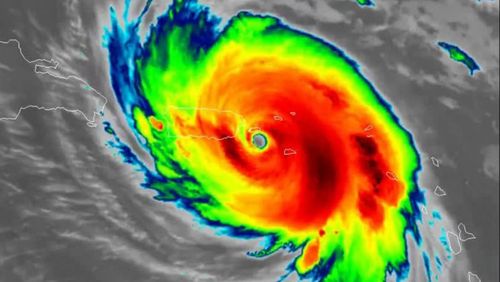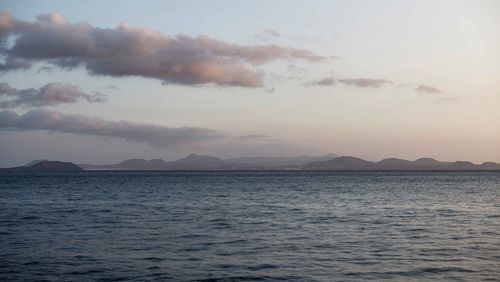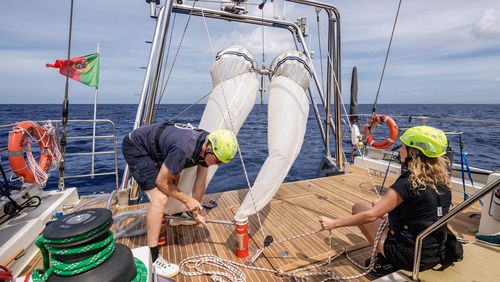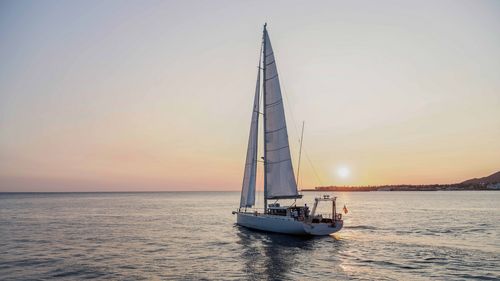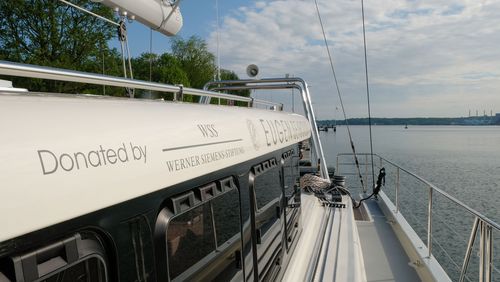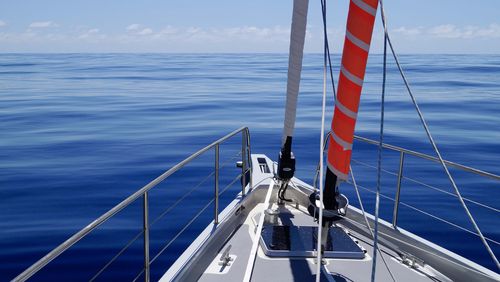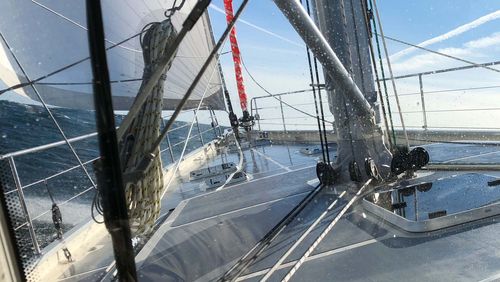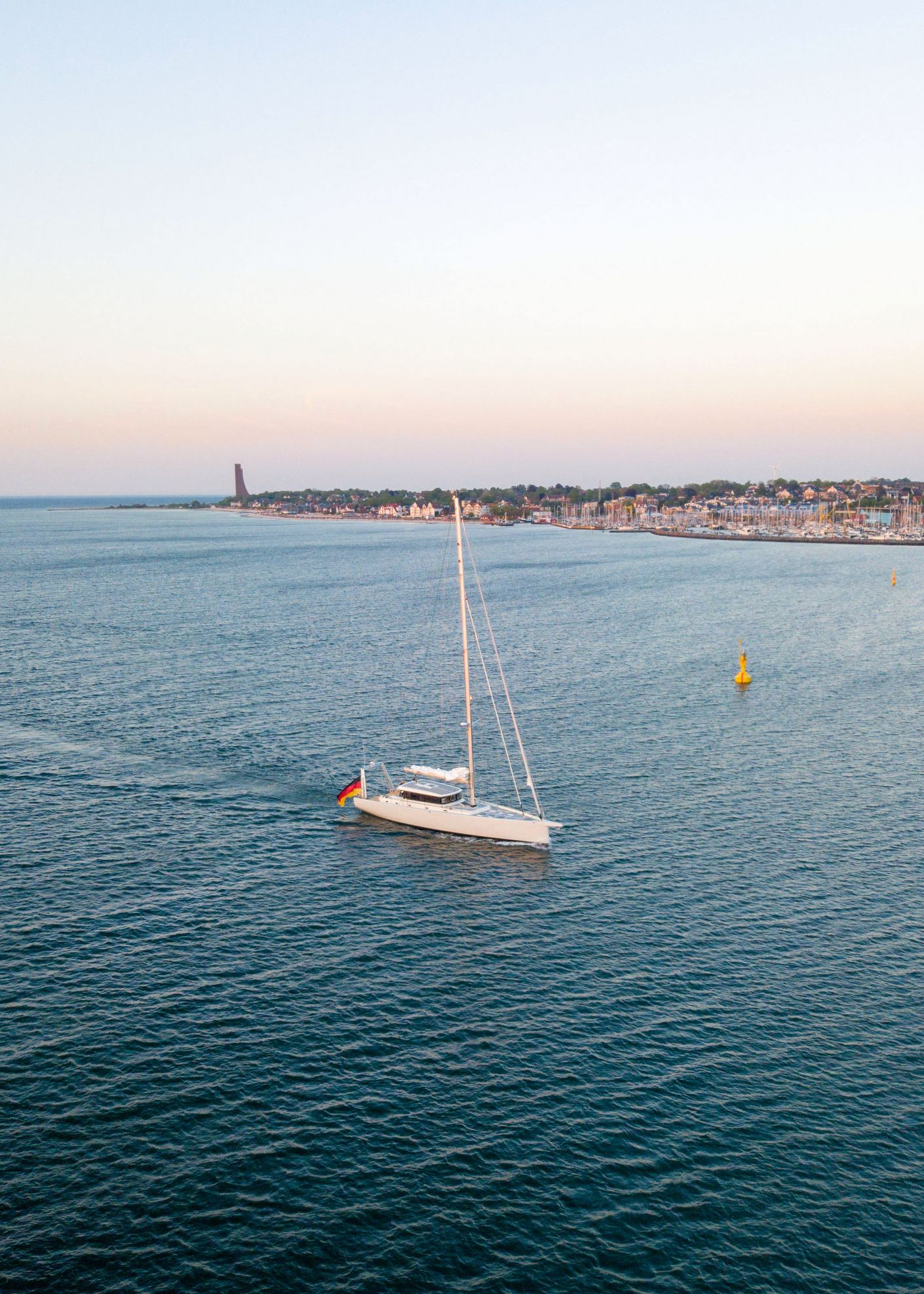
What the Seibold can do
As of summer 2018, it’s all hands on deck when the Seibold embarks on its maiden voyage: a research trip to the Canary Islands and the Cape Verde archipelago. There, the six-person crew will literally test the waters—examining the biological, chemical and physical properties of the sea.
By night, the two captains will steer the research vessel to the targeted research destination; by day, the researchers will spend roughly 10 hours collecting and analysing seawater, phytoplankton and zooplankton specimens. “It’s very hard work,” says palaeoclimatologist Gerald Haug—the “inventor” of the Seibold speaks from first-hand experience. That’s why the Seibold will dock in a harbour every three weeks for a seven-day break and to rotate the crew.
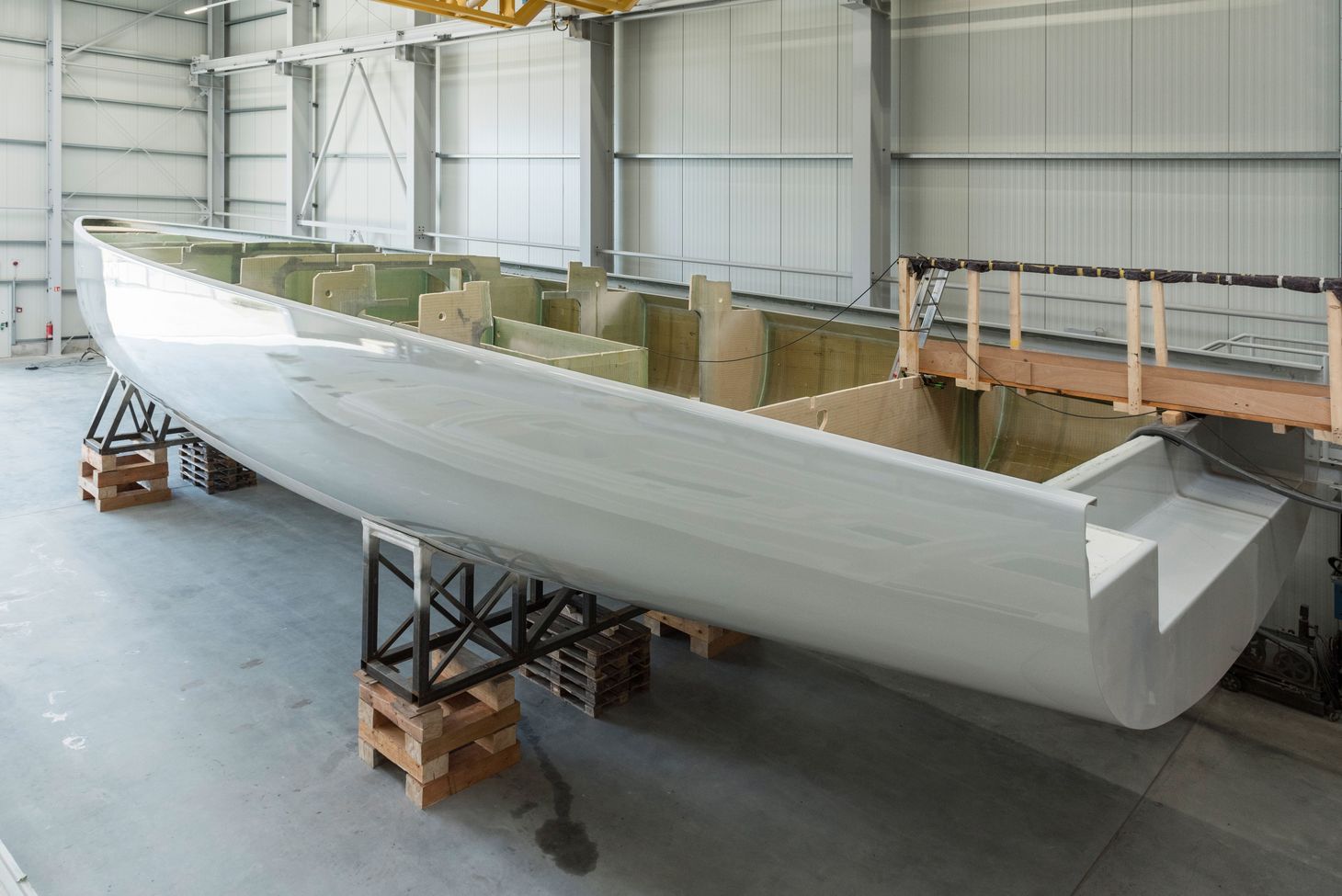
1 Sails
The Seibold is a very fast vessel and could circumnavigate the globe in a single year, while carefully collecting specimens along the way. A sail area of roughly 350 m2guarantees a speed of eight to ten knots.
2 Hybrid motor
For safety reasons, a hybrid motor (diesel and electrical) is installed in the Seibold as a back-up in the unlikely event that the crew should encounter slack winds or other troubles on the high sea. The 4,000 litres of reserve diesel fuel are enough to bring the crew safely to shore from the middle of the Atlantic. “Our goal is to operate the greenest research vessel in the world,” says Gerald Haug. “But no one should go to sea without a diesel motor.”
3 Propeller
The propeller of the Seibold is unusually large, as it powers the generator that supplies electricity. The electricity is stored in an 80 kWh lithium battery, which provides enough energy for roughly 10 hours of specimen seeking. The generator also provides the electricity needed to propel the vessel as well as the power used in the lab to operate the mass spectrometers, analysis equipment, refrigerators and freezers.
4 Multisensor
The multisensor is lowered into the water, where it registers the physical properties of the ocean to a depth of 2,500 metres: temperature, salinity, pH, fluorescence, chlorophyll etc. This allows the team to examine the ocean layers, the supply of nutrients and the permeability between upper and lower layers.
5 Mass spectrometer
To measure the oxygen and carbon isotopes (∂18O, ∂13C and other parameters), the seawater is continuously monitored using a mass spectrometer. The researchers observe how much oxygen the marine plants produce via photosynthesis—which has been coined the “biological productivity” of the ocean. The mass spectrometer also measures metal isotopes; these are sent to the labs at the Max Planck Institute for Chemistry, ETH Zurich and other international partners, where they are analysed in detail.
6 Vacuum hose
On board the Seibold, there is a very large “air vacuum cleaner”, with a ten-metre long hose attached to the vessel’s mast. The hose is extended as high as possible into the air, where it sucks in air and delivers it directly to the lab for analysis. Among the particles in the air is dust, which plays a major role in the climate system: dust can have a cooling effect, because it reflects the sun’s rays. Moreover, dust contains iron particles and other micro nutrients that fertilize the seawater and promote the growth of algae, which leads to a reduction in CO2levels.
7 Nets
The researchers use newly constructed, especially light plankton nets to fish for ocean dwellers such as foraminifera (single-cell animals with a chalky shell), which are the most important proxies in palaeoclimatology research.
8 Flow cytometer
The flow cytometer records which microorganisms such as picoplankton (for instance, cyanobacteria) and algae are in the water. The upper 500 metres of the sea have the most life because the sun’s rays penetrate this layer. In part, however, the researchers lower their probes even deeper, up to 2.5 kilometres deep.
9 Chlorophyll
Algae form chlorophyll to trigger photosynthesis. The amount of chlorophyll indicates the biological productivity of the algae.
10 CO2reservoirs
Every year, humans release approximately 10 gigatons of carbon into the atmosphere, where it's oxidised to carbon dioxide. The ocean absorbs roughly 25% of this CO2, causing its waters to acidify. This, in turn, endangers marine animals and plants: the further from the North Atlantic to the Pacific, the more dead biomass in the oceans’ depths. The deep layer of the ocean has 60 times more carbon dioxide than the atmosphere. Moreover, it has numerous layers: this thermal stratification in the lower latitudes and the polar regions forms a kind of “lid” to retain carbon dioxide in the depths. The “lid” in the North Pacific and the South Sea is, however, only 200 to 400 metres thick. If the temperature of the Earth and the oceans rise, these lids will disappear and rise to the surface like a freshwater lens. This in turn allows CO2-rich water to come to the surface; carbon-dioxide is then released into the atmosphere, causing it to warm even more.
11 pH value
Seawater is alkaline, with a current pH value of 8.1. Through the absorption of atmospheric carbon dioxide, seawater has become some 30% more acidic since the advent of the Industrial Revolution 150 years ago, with its pH dropping from 8.2 to 8.1. In a negative feedback loop, the water then absorbs less carbon dioxide, leading to reduced capacity in its reservoirs.
12 Plastic detectors
Plastic has a catastrophic effect in the ocean because it's non-biodegradable and because it kills fish and birds that mistake it for food. Moreover, microplastics can be stored in animal tissue, which causes poisoning and infertility. In the end, these plastics find their way into the food chain and sometimes into the human body.
13 Temperature and salinity
Sensors on the vessel’s hull measure the temperature and salinity of the ocean. Global warming could cause Greenland to melt, which would flood the Gulf Stream with freshwater. As a result, the North Atlantic would lose salinity and become lighter, causing the water levels to rise. Today, the Gulf Stream flows like a steep waterfall into the deep North Atlantic Ocean and propels circulation; after 2,000 years, the water particles complete the cycle and return to the Pacific. This whole cycle is called the “global ocean conveyor belt”. Many researchers believe that warmer seawaters would disrupt the system.
Text: Brigitt Blöchlinger
Photos: Margit Wild

